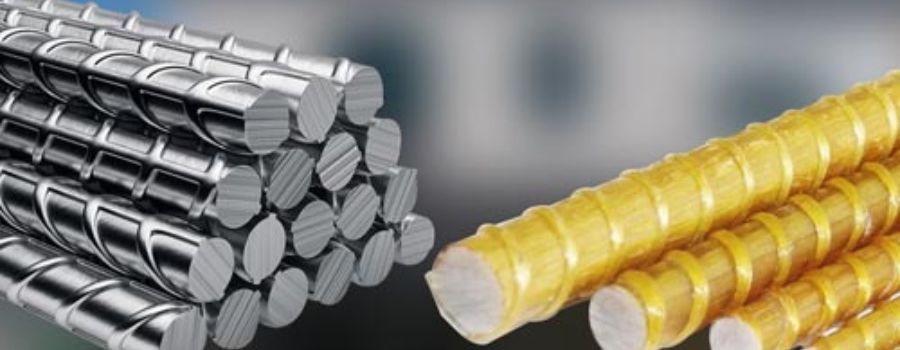Traditionally, steel rebars have been the go-to choice for construction to maintain structural integrity and durability, but advancements in the industry have introduced fiber-reinforced polymer (FRP) rebars as a much better alternative. Understanding the key differences between steel rebar vs. FRP rebar materials can help engineers, builders, and developers make informed decisions for their construction projects.
What exactly is Steel Rebar?
Steel rebar is a reinforcement material made from carbon steel, designed to increase the tensile strength of concrete structures, used widely in bridges, buildings, roads, and other infrastructures.
What exactly is FRP Rebar?
FRP rebar is a composite material made of high-strength fibers such as glass, embedded in a polymer resin matrix. Unlike steel, FRP does not corrode, making it a promising alternative in all kinds of applications.
Key Differences Between Steel Rebar vs. FRP Rebar
1. Corrosion Resistance
- Steel Rebar: Prone to rust and corrosion, especially in marine, coastal, and high-moisture environments. Requires protective coatings or treatments to tackle corrosion.
- FRP Rebar: Naturally corrosion-resistant, making it ideal for long-term durability in harsh environments without the need for extra coatings.
2. Strength and Weight
- Steel Rebar: Strong but heavy, making transportation and installation more labour-intensive.
- FRP Rebar: Significantly lighter (about 75% less in weight) than steel while offering comparable or superior tensile strength, reducing handling costs and construction time.
3. Durability and Lifespan
- Steel Rebar: Prone to degradation over time due to corrosion and environmental exposure, leading to potential structural failures.
- FRP Rebar: Longer lifespan due to its resistance to corrosion, moisture, and chemicals, reducing maintenance and replacement costs.
4. Thermal and Electrical Conductivity
- Steel Rebar: Conducts heat and electricity, making it unsuitable for sensitive structures like MRI rooms and power plants.
- FRP Rebar: Non-conductive, making it an excellent choice for projects requiring electromagnetic neutrality.
5. Cost Considerations
- Steel Rebar: Initially more affordable, but incurs higher lifecycle costs due to corrosion maintenance and potential replacements.
- FRP Rebar: It not only has a lower upfront cost but also a lower maintenance and longer lifespan, making it cost-effective in the long run.
6. Sustainability and Environmental Impact
- Steel Rebar: Requires energy-intensive production, contributing to higher CO2 emissions.
- FRP Rebar: Lower carbon footprint due to its energy-efficient manufacturing process and extended lifespan, making it a more sustainable option.
Which One is the Best Choice For You?
- Steel Rebar is ideal for standard construction projects where corrosion is not a major concern and initial cost savings are a priority.
- Use FRP Rebar for environments exposed to moisture, chemicals, or extreme weather conditions, where long-term durability and sustainability are key factors.
Both steel and FRP rebar have their benefits and ideal applications. While steel remains a conventional choice, FRP is emerging as the future of sustainable and long-lasting reinforcement. As the construction industry evolves, the shift towards corrosion-resistant, lightweight, and eco-friendly options like FRP rebar will become more widely used, encouraging innovation and efficiency in modern infrastructure.
Read More –
1. The Future of GFRP Rebar in Sustainable and Eco-Friendly Construction

